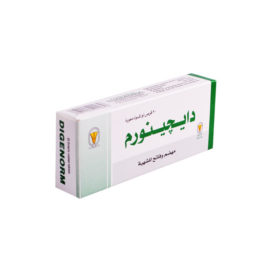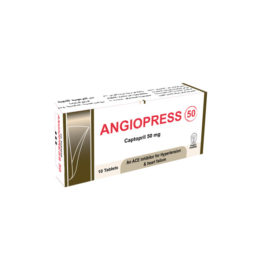Description
PROPERTIES:
Lasiphar ampoules, for intramuscular (I.M.) or intravenous (I.V.) administration, contain frusemide, a highly effective diuretic which causes a peak diuresis far greater than that occurs with most other diuretics in a wide range of clinical conditions. Frusemide acts on the nephron principally on the thick ascending limb of the loop of Henle with additional effects on the proximal renal tubule resulting in a profound increase in the urinary excretion of water, sodium, chloride and potassium. In addition, frusemide increases renal blood flow and causes a redistribution of flow from renal medulla to cortex and within the cortex. These hemodynamic changes are related to frusemide-induced increase of renal secretion of prostaglandins and renin. Frusemide also increases systemic venous capacitance and thereby decreases left ventricular filling pressure. This effect benefits patients with pulmonary edema even before diuresis ensues. The onset of diuresis, following Lasiphar I.V. administration, is within 5 minutes and somewhat later after I.M. administration. The peak effect occurs within 30 minutes and the duration of action is about 2 hours.
PHARMACOKINETICS:
Lasiphar in the form of ampoules, is given by intramuscular or intravenous administration. In the body, the drug is extensively bound to plasma proteins (more than 95%). A small fraction (about 35%) of the drug is metabolized in the liver, while the remaining larger part (about 65%) is eliminated unchanged by urinary excretion. The plasma half-life of frusemide is about 1.5 hours.
INDICATIONS:
Lasiphar as ampoules, is indicated by the intramuscular or intravenous route when the clinical situation demands a very prompt diuresis or when oral medication
is impractical for any reason as in:
– Acute pulmonary edema
– Cerebral edema
– Edema associated with :
♣ Congestive heart failure
♣ Hepatic cirrhosis
♣ Nephrotic syndrome and other renal diseases
– Eclampsia
DOSAGE & administration:
Lasiphar intravenous injection must always be given slowly. The diuretic effect of Lasiphar is proportional to the dosage. Lasiphar injection is repeated daily in severe conditions and parenteral therapy should be replaced by oral therapy as soon as this is practical for the condition being treated.
– Adults: Doses of 20mg-40mg intramuscularly or intravenously may be given as a single dose initially. A second dose can be administered 2 hours after the first dose or later depending on the patient response. If a larger parenteral dose is required, it should be given by slow I.V. infusion and titrated according to the response and as directed by the physician.
– Elderly patients: In the elderly, frusemide is generally eliminated more slowly. Dosage should be titrated until the required response is achieved.
– Children: 0.5-1.5 mg/kg body weight daily up to a maximum total daily dose of 20 mg.
Contraindications:
Hypersensitivity to frusemide or sulphonamides, dehydration; severe Na+ , severe K+ and volume depletion, renal failure due to nephrotoxic drugs, anuria, comatose or
pre-comatose states associated with liver cirrhosis.
Side effects:
Lasiphar is generally well tolerated. Side-effects of a minor nature such as nausea, dizziness and vertigo may occur.The incidence of allergic reactions, such as skin rashes, is very low. Tinnitus and disorders of hearing after frusemide administration are rare and, in most cases, reversible and may occur if frusemide is injected too rapidly, particularly in patients with renal insufficiency. Pre-existing metabolic alkalosis (e.g. in patients with decompensated liver cirrhosis) may be aggravated by frusemide treatment.
drug interactions:
ϖ The dosage of concurrently administered cardiac glycosides or antihypertensive agents may require adjustment. A marked fall in blood pressure may be seen when
ϖ ACE inhibitors are added to frusemide therapy.
ϖ The toxic effects of nephrotoxic antibiotics may be increased by concomitant administration of potent diuretics such as frusemide.
ϖ Latent diabetes may become manifest or insulin requirements of diabetic patients may increase during therapy with frusemide.
ϖ In common with other diuretics, serum lithium levels may be increased when lithium is given concomitantly with frusemide.
ϖ Non-steroidal anti-inflammatory drugs (e.g. indomethacin, acetylsalicylic acid) may attenuate the action of frusemide and may cause renal failure in cases of pre-existing hypovolemia.
ϖ The risk of ototoxicity may be increased if frusemide is administered with ototoxic agents such as aminoglycoside antibiotics.
ϖ In cases of concomitant glucocorticoid therapy, the risk of increased potassium loss should be considered.
Pregnancy & lactation:
ϖ The drug should be used in pregnancy only if strictly indicated and for short-term treatment.
ϖ As frusemide may inhibit lactation or may pass into breast milk, it should be used with caution in nursing mothers.
Precautions & warnings:
ϖ Patients with prostatic hypertrophy or impairment of micturition have an increased risk of developing acute urine retention.
ϖ Where indicated, steps should be taken to correct hypotension or hypovolemia before commencing diuretic therapy.
ϖ Caution should be considered in patients liable to electrolyte deficiencies.
Packing:
A carton box containing 3 type A brown glass Lasiphar 20 ampoules each of 2 ml.
A carton box containing 3 type A brown glass Lasiphar 40 ampoules each of 4 ml.
STORAGE:
Keep at a temperature not exceeding 30C.
Keep out of reach of children.
instructions to patients:
None.








Reviews
There are no reviews yet.